- 3 Big Scoops
- Posts
- 🗞 Trump Announces Crypto Reserve
🗞 Trump Announces Crypto Reserve
PLUS: The tech sector remains under pressure
Bulls, Bitcoin, & Beyond

Market Moves Yesterday
S&P 500 @ 5,954.50 ( ⬆️ 1.59%)
Nasdaq Composite @ 18,847.28 ( ⬆️ 1.63%)
Bitcoin @ $86,839.33 ( ⬆️ 1.32%)
Hey Scoopers,
Happy Monday! Here’s what we’re covering today:
👉 Intel’s chip plant is delayed
👉 Palantir leads tech sell-off
👉 Bitcoin surges ahead
So, let’s go 🚀
Market Wrap
Wall Street closed higher on Friday, capping a turbulent week and month for major averages.
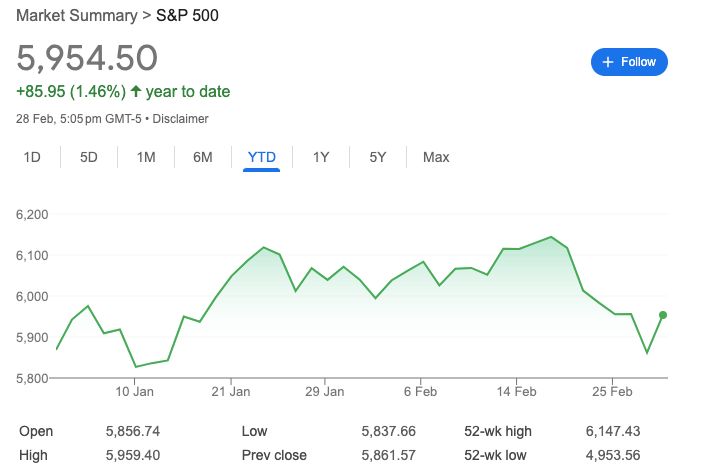
The S&P 500 gained 1.59% to finish at 5,954.50, while the Dow Jones Industrial Average rose 601.41 points (1.39%) to 43,840.91, and the Nasdaq Composite climbed 1.63% to 18,847.28.
Markets briefly pulled back midday after a tense exchange between President Donald Trump and Ukrainian President Volodymyr Zelenskyy in the Oval Office.
During the meeting about a potential Ukraine mineral rights deal, Trump told Zelenskyy, "You either make a deal or we're out," warning about "gambling with World War III."
Despite Friday's rally, February proved challenging for investors. The Nasdaq suffered its worst month since April 2024, dropping nearly 4%. The S&P 500 fell 1.4% for the month, while the Dow declined 1.6%.
Investors continue to navigate concerns about Trump's tariff policies and economic warning signs.
Learn AI in 5 minutes a day
This is the easiest way for a busy person wanting to learn AI in as little time as possible:
Sign up for The Rundown AI newsletter
They send you 5-minute email updates on the latest AI news and how to use it
You learn how to become 2x more productive by leveraging AI
Trending Stocks 🔥
Nvidia - Shares of the AI chip darling gained close to 4% as it recovered some of the losses following its Q4 results.
China stock - U.S. shares of Chinese companies declined after China vowed to retaliate, if necessary, against U.S. President Donald Trump’s latest threat to impose an additional 10% tariff on Chinese goods on March 4.
Dell Technologies - The tech stock slumped 4.7% after its fiscal Q4 revenue of $23.93 billion missed estimates of $24.56 billion. It, however, reported earnings of $2.68 per share, above estimates of $2.53 per share.
Trump’s Bitcoin Bet
Cryptocurrencies surged Sunday after President Donald Trump announced plans to create a U.S. Crypto Strategic Reserve encompassing various digital assets.
Bitcoin jumped 10% to $94,343.82 after falling to a three-month low below $80,000 on Friday.
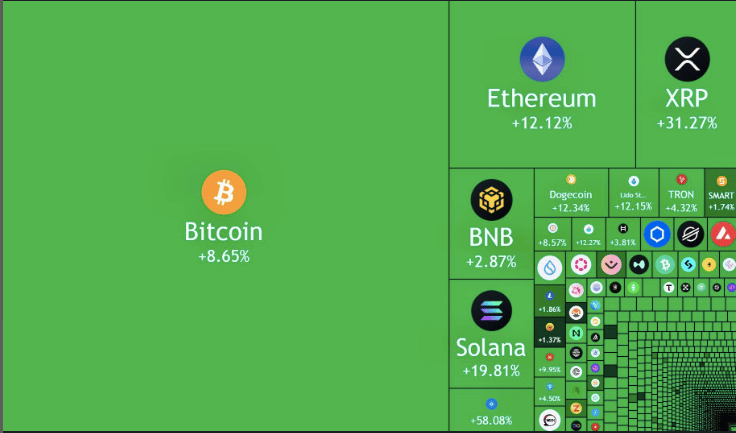
In posts on Truth Social, Trump declared his intention to make the United States "the Crypto Capital of the World.”
He specifically identified Bitcoin and Ethereum as being "at the heart of the Reserve" while also mentioning XRP, Solana's SOL token, and Cardano's ADA.
The announcement triggered significant price surges across the crypto market, with XRP rising by 30%, Solana jumping by 20%, and ADA soaring by over 60%.
Ethereum, which has underperformed compared to other cryptocurrencies this year, increased by 13%.
This marks an evolution in Trump's crypto strategy, shifting from his earlier proposal of a "stockpile" that would retain government-seized cryptocurrencies to a more active "reserve" approach.
The President is scheduled to host the first White House Crypto Summit on Friday, where investors expect additional details about the initiative.
The announcement comes after a difficult period for cryptocurrencies, with Bitcoin concluding its worst month since 2022.
The crypto community remains divided on the initiative. Some purists argue that a government reserve should only include Bitcoin, while others question whether government ownership of decentralized assets aligns with crypto's foundational principles.
The Tech Sector Takes a Hit
The Cboe Volatility Index (VIX) rose more than 1 point to 22.40 on Friday, reaching its highest level since January 27.
This key gauge of market fear increased amid a challenging week for technology stocks.
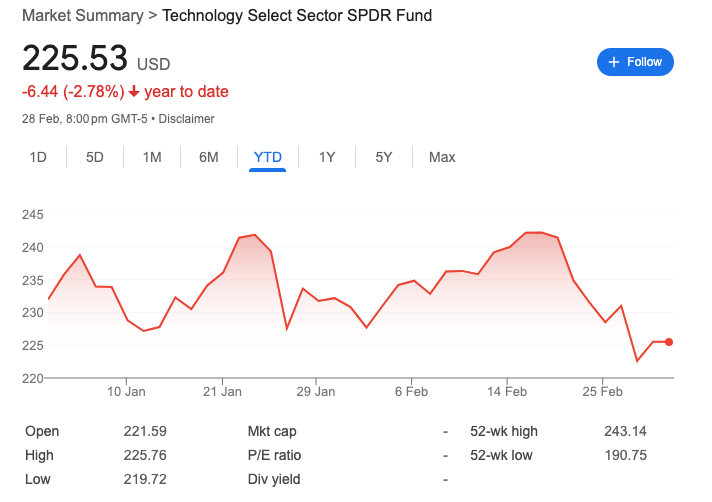
The information technology sector has been the worst performer in the S&P 500, tumbling 6% weekly. Industry heavyweights faced significant pressure, with Nvidia dropping 10.9% and Palantir Technologies plummeting nearly 19%.
The communication services and consumer discretionary sectors also struggled, falling 4% and 3.9%, respectively.
Palantir faced its largest weekly decline since February 2021, trading over 30% lower than its 52-week high. This marks the stock's first consecutive double-digit weekly drop since August 2022.
The broader semiconductor sector is also facing challenges. The VanEck Semiconductor ETF (SMH) was down 8.6% for the week, heading toward its worst weekly performance since September.
The ETF has declined by approximately 6.2% in February, marking what could be its most challenging month since September 2023.
Meanwhile, the financial sector has shown resilience, rising 1.3% during the week despite the broader market volatility.
Analysts Lower Estimates for Q1
Analysts have lowered first-quarter earnings estimates for S&P 500 companies amid growing concerns about inflation and tariffs.
The Q1 bottom-up EPS estimate decreased 3.5% (to $60.66 from $62.89) between December 31 and February 27, exceeding historical averages.

All eleven market sectors experienced downward revisions for Q1, with Materials (-16.2%) and Consumer Discretionary (-8.8%) facing the steepest cuts.
For the full calendar year 2025, analysts have reduced EPS estimates by 1.0% (to $271.28 from $274.12) during January and February.
Among sectors, Materials again saw the most significant downward revision (-9.1%) for 2025 projections, while Financials was the only sector showing improvement with a 1.1% increase in its full-year earnings forecast.
Intel Delays Chip Plant Opening to 2030
Intel has announced a significant delay in the opening of its planned chip manufacturing complex in Ohio. Its first plant is expected to launch in 2030, five years later than initially scheduled.
The second factory, a $100 billion facility, is now expected to begin operations in 2032.
"As we continue to invest across our U.S. sites, it's important that we align the start of production of our fabs with the needs of our business and broader market demand," said Naga Chandrasekaran, Intel's vice president and head of global operations for Intel Foundry Manufacturing.
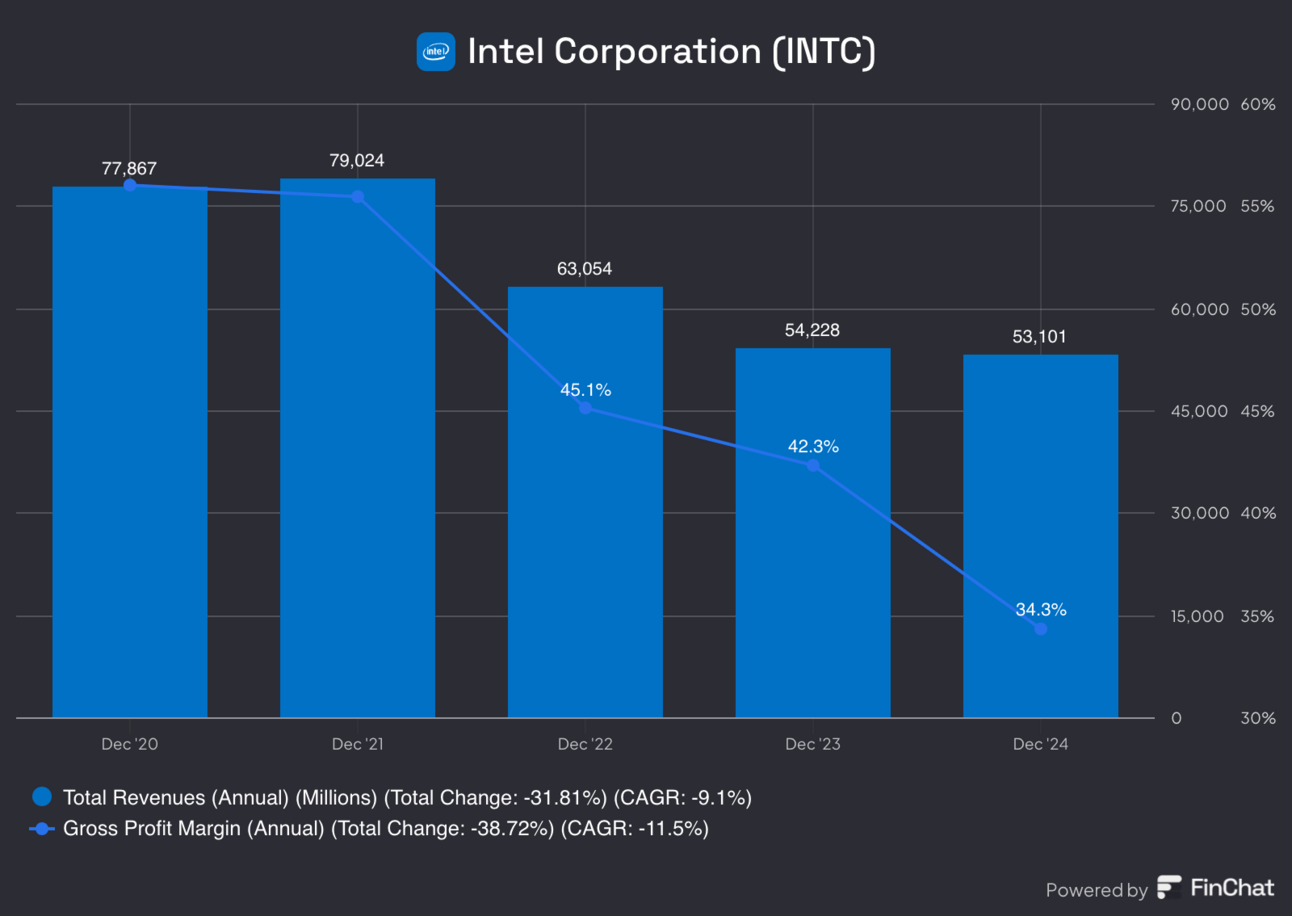
The delay marks another setback for the once-dominant semiconductor manufacturer that has faced challenges during the artificial intelligence boom.
In 2024, Intel lost over half of its market value and announced a 15% reduction in its workforce after facing its largest one-day stock market decline in 50 years last August. These challenges led to the dismissal of CEO Pat Gelsinger in December.
Despite its troubles, Intel remains a major recipient of government support through the CHIPS and Science Act, receiving approximately $8 billion in federal grants last November to boost domestic semiconductor production.
Headlines You Can't Miss!
Zelenskyy seeks support at emergency EU meet
Microsoft resolves global outage
U.S. GDP growth might be negative in Q1
Amazon plans to expand its discount storefront
Trump to host crypto summit this week
Chart of The Day
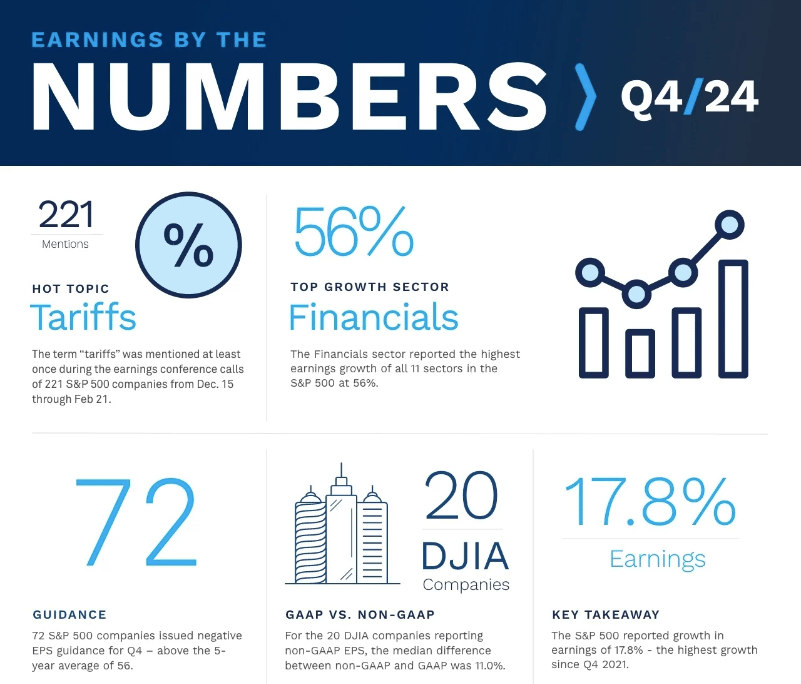
Meme of the Day

DISCLAIMER: None of this is financial advice. The newsletter is strictly educational and is not investment advice or a solicitation to buy or sell assets or make financial decisions. Please be careful and do your own research.

